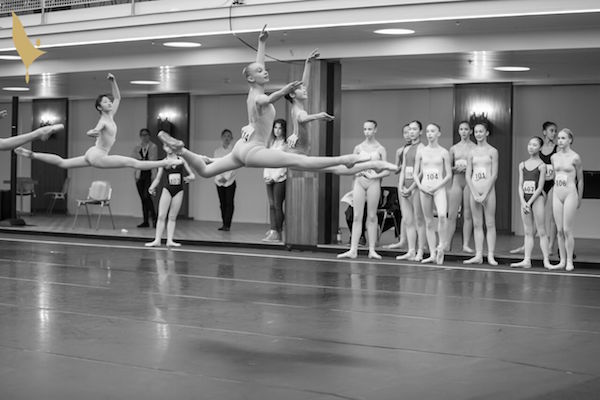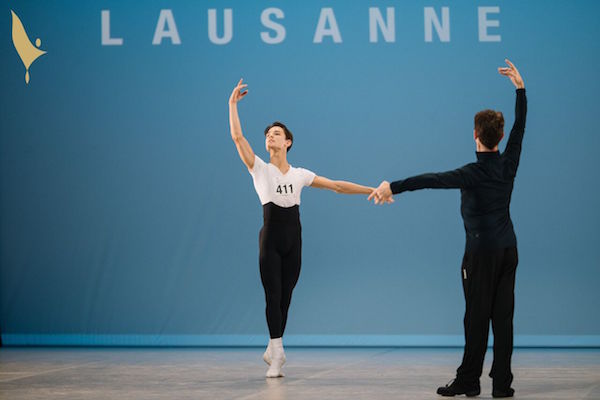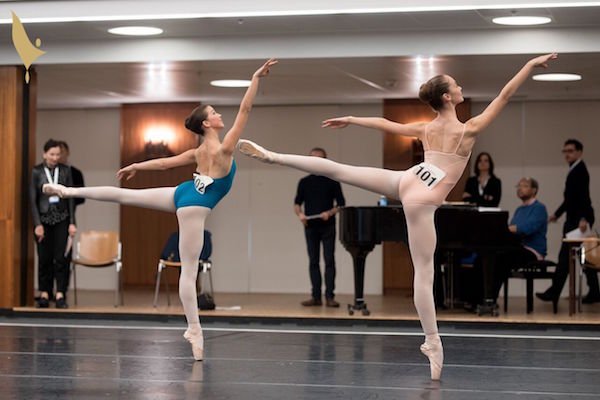Annette Roselli reports from the 2018 Prix de Lausanne.
78 candidates worldwide were selected to compete at the 46th Prix de Lausanne, 2018. 11 Australians were amongst the successful candidates. The competition commenced on 28 January with registration, measuring of students, assigning of numbers and classes closed to public viewing.
I arrived on 29 January in time to view the junior boys and girls contemporary classes and felt understandably proud to watch my students Matthew Maxwell and Primrose Kern. Working in the raked studio was a good chance for the candidates to feel where their weight needed to be. The standard was exceptional – from the beautiful physiques, the students’ commitment to picking up the choreography and the application of the corrections given to them – it was clear that these dancers were amongst the best in the world. Many of the students had interpreters standing at the side of the studio, translating the corrections as they danced. Due to the lowered age this year, eight younger students (14 years old), were able to compete. The new rules were applied in 2018 in order to offer students the opportunity to enter professional schools at 15 years old instead of 16.
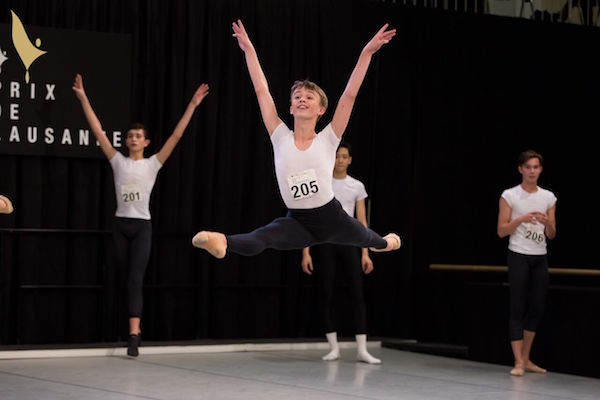
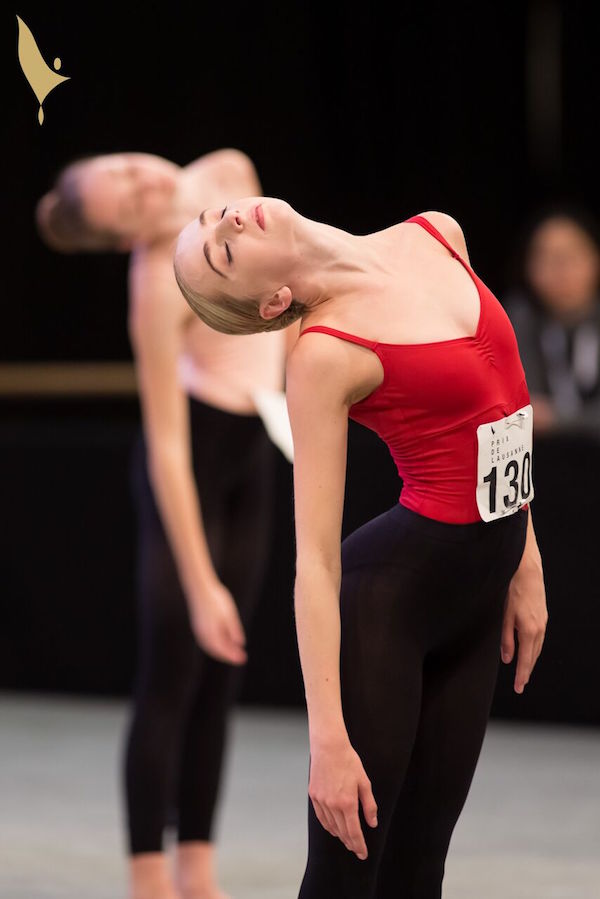
Days 2 to 4 consisted of classical classes, contemporary classes, variation coaching and contemporary solo coaching. Audience members were only permitted to watch those classes that were not marked by the nine-member jury. We were able to wander between studios and the theatre to watch the different age groups and genres. I was surprised at how few audience members were viewing classes and rehearsals however this increased on Thursday and again for the performances on Friday. The Saturday finals were sold out. The Theatre Beaulieu is modern and spacious. Studio 1 was rather small, especially when age groups were combined, but studio 2 where the jury was situated, and the theatre, were large and served the purpose beautifully. Chandeliers in the studios added certain glamour to the event. 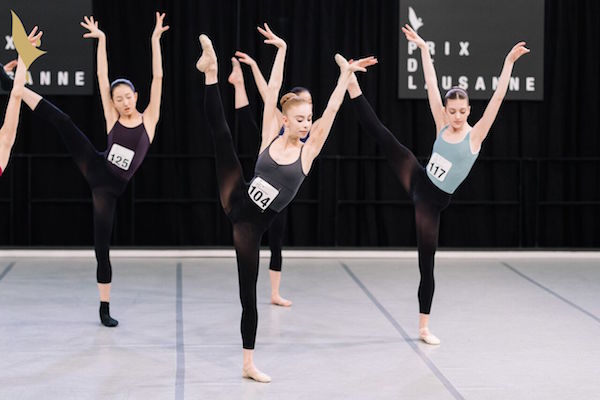
The competitiveness between the candidates was plain to see. Vying for that front centre position was paramount for the majority. I often saw the “look” given to those who had been pushed to one side and out of their prime position. Whilst this experience could be described as character-building, it is a tough growth experience for those so young. A handful stood out immediately, with their strength, confidence, artistry and physical prowess.
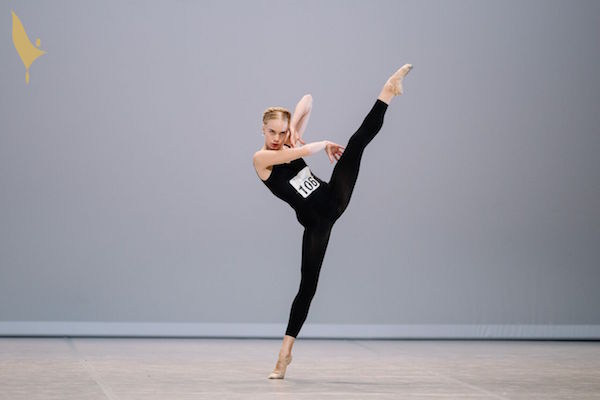
It was exciting to be able to watch one of our talented Australian teachers/choreographers, Louise Deleur, in action coaching the students on her commissioned contemporary variations. Her choreography moved and challenged the candidates. Classical variation coaching was performed on the stage in the theatre and in the raked studio space. Expert, enthusiastic and professional coaching was taken by Monique Loudieres and Patrick Armand. Some students rose to the occasion and others buckled a little under the pressure or succumbed to the unrelenting challenge of the rake.
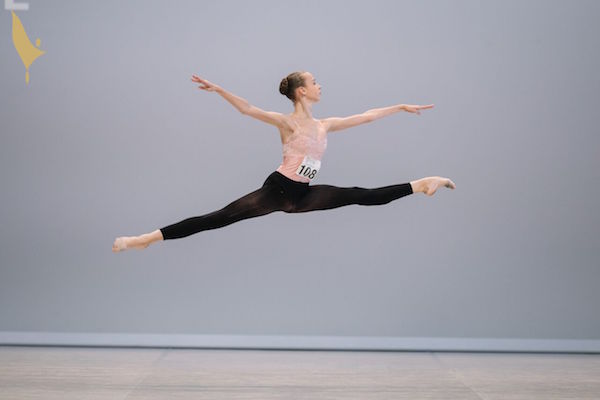

All rehearsals and coaching lead up to the final performances on February 2: 9.30am for juniors and 2.30pm for seniors. Arguably the most competitive and professional competition in the ballet world, the standard was understandably high and took my breath away. South Korean students in particular, with 54 entrants (second largest entry equal with USA), displayed amazing strength and delicate understated artistry. Japanese candidates, the largest number of entrants (74) also showed beautiful training. My own students danced very well and went above and beyond. What an experience for one so young.
We all waited with bated breath to hear who would receive the ultimate prize – a place in the finals of the 46th Prix de Lausanne. Unfortunately no Australians made the finals.
The 21 finalists of the Prix de Lausanne 2018:
112. PARK Hanna / South Korea / 15.5 years old
301. XU Jingyi / China / 17.3 years old
115. YANG Irene / Canada / 15.8 years old
303. GALVAO Carolyne / Brazil / 17.5 years old
125. TENG Ronger / China / 16.2 years old
309. ZHAO Xinyue / China / 17.11 years old
126. MISSELDINE Chloe / USA / 16.3 years old
310. OKI Aina / Japan / 18 years old
134. GUO Wenjin / China / 16.8 years old
313. NAM Minji / South Korea / 18.5 years old
135. GELFER-MÜNDL Aviva / USA / 16.1 years old
407. WAGMAN Shale / Canada / 17.9 years old
201. CARMECI Finnian / USA / 15.2 years old
409. ZAGIDULLIN Ervin / Russia / 18 years old
203. MORIWAKI Takayuki / Japan / 15.8 years old
412. ARANDA MAIDANA Miguel Angel David / Paraguay / 18.6 years old
206. YERG Makani / USA / 16 years old
413. LORICCHIO Davide / Italy / 18.7 years old
207. LEE Junsu / South Korea / 16.1 years old
416. BAREMAN Lukas / Belgium / 18.1 years old
210. SNYDER Eric / USA / 16.1 years old
The finals performances were outstanding from every candidate. It is hard to believe that these candidates ranged between 15 and 18 years old. The dancers presented a maturity, control and command of the stage that was way beyond their years.
Shale Wagman (from Canada, studying at Princess Grace) was a stand out from the beginning and didn’t disappoint in the finals. His elevation, turns and bravado made the audience gasp and cheer. He went on to win the first prize.
The eight Prix de Lausanne 2018 prize winners:
407 – WAGMAN, Shale – 17.9 years old – Canada (WINNER)
112 – PARK, Hanna – 15.5 years old – South Korea
134 – GUO, Wenjin – 16.8 years old – China
207 – LEE, Junsu – 16.1 years old – South Korea
309 – ZHAO, Xinyue – 17.11 years old – China
412 – ARANDA MAIDANA, Miguel Angel David – 18.6 years old – Paraguay
303 – GALVAO, Carolyne – 17.5 years old – Brazil
135 – GELFER-MÜNDL, Aviva – 16.10 years old – USA
Contemporary Dance Prize:
207 – LEE Junsu – 16.1 years old – South Korea
Audience Favourite Prize:
303 – Carolyne GALVAO – 17.5 years old – BRAZIL
Rudolf Nureyev Foundation Prize:
407 – WAGMAN Shale – 17.9 years old – Canada
Best Swiss Candidate Prize:
416 – BAREMAN Lukas – 18.1 years old – Belgium
The Networking Forum on the last day was exciting for some and possibly disappointing for others. After a slow, rather disorganised start, students (and their parents and teachers) were given the opportunity to talk face to face with directors from well renowned schools throughout the world. What a wonderful chance for students to ask questions and to hear firsthand, offers presented to them that can potentially change their lives. It was wonderful to see so many directors in one room, fulfilling young dancers dreams.
Tourist Note: If you are contemplating spending some extra time in Lausanne before or after the competition, I highly recommend taking a 1.5 hour (train and bus) journey up to Les Diablerets in the Swiss Alps. My daughter and I spent part of our last day in Lausanne exploring this breathtaking ski village where we admired unforgettable panoramic views and experienced a stunning alpine village.
Pictured top is Shale Wagman. Photo: Gregory Batardon.
